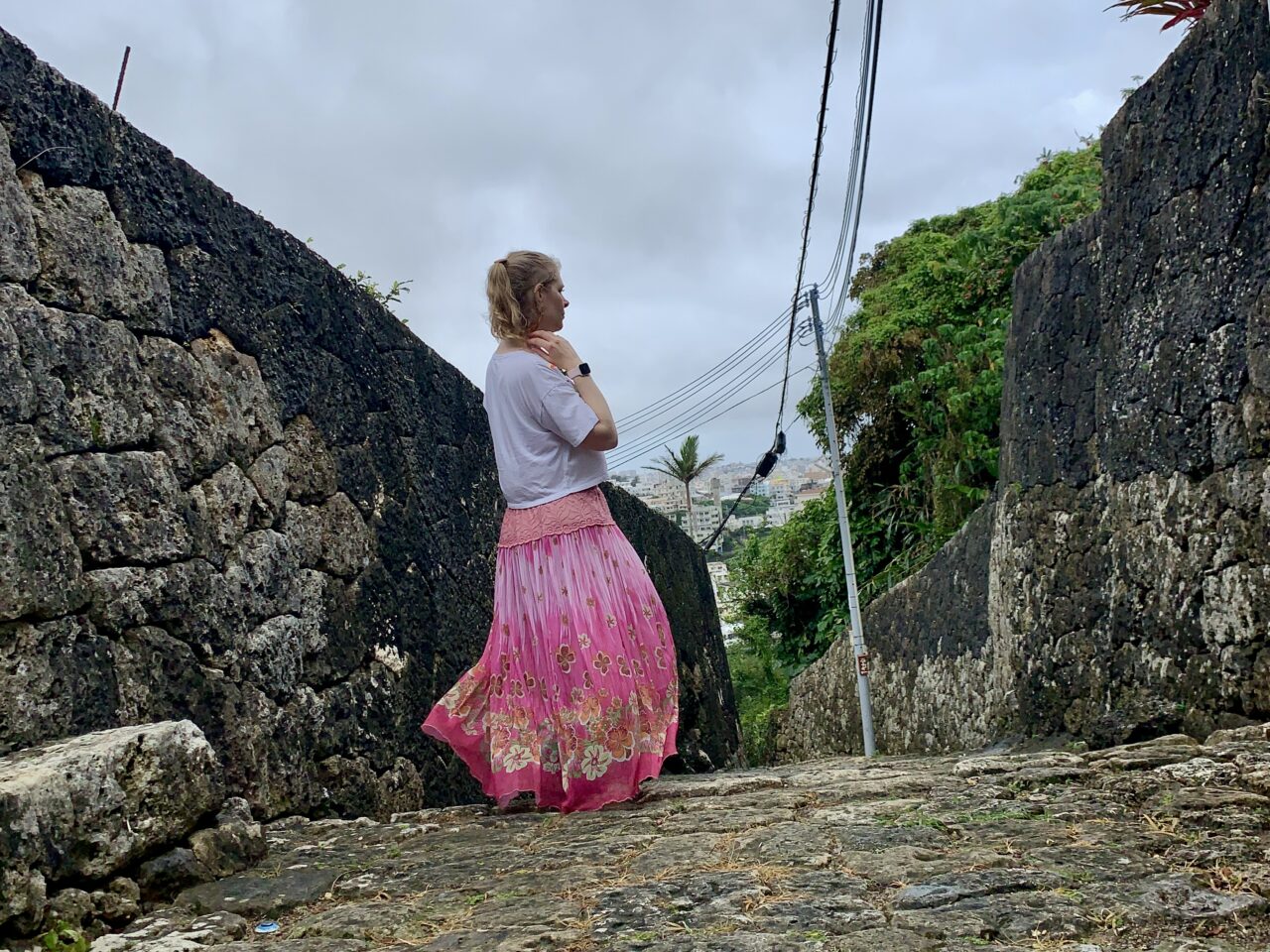Okinawa Without a Car- Part 1- Naha City
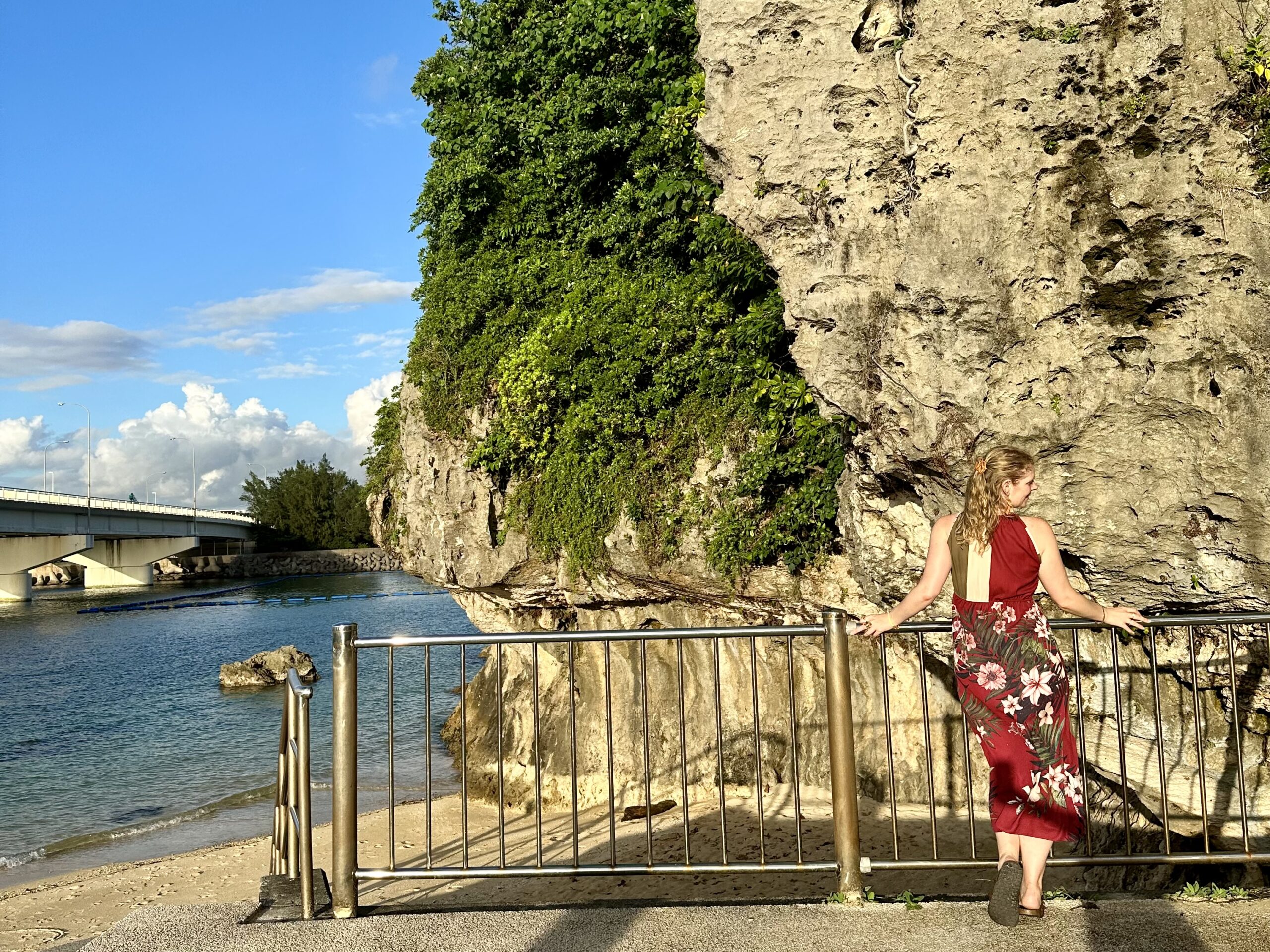
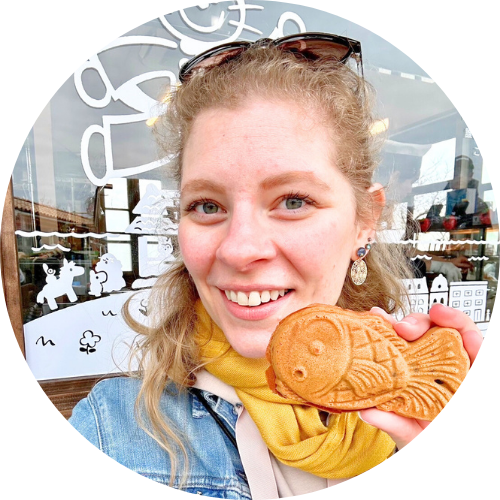
Written by
Name: Stephanie
Country of origin: USA
How long you’ve lived in Japan: 6 years
Where you live in Japan: Tokyo (and 1 year in Gunma)
Instagram
Have you ever heard of Japan’s tropical paradise Okinawa? If you haven’t, you’re missing out! But if you have, one thing you’ve probably heard time and time again is “You need a car.” People swear that you need a car as soon as you step foot off the plane to do anything in Okinawa, but I’ve been there twice before I had my Japanese license and I had a great time. I’m here to spread the good word about traveling in Okinawa using nothing but good old public transport, so hop on the bandwagon and let’s dive in!
Okinawa Primer
Okinawa Prefecture (沖縄県) is a chain of islands situated between Japan and Taiwan. Before becoming part of Japan through colonization, Okinawa was its own country known as the Ryūkyū Kingdom (琉球王国), so you’ll see things around Okinawa with “Ryukyu” in the name quite frequently. Japan colonized Ryūkyū in the late 19th Century, and in 1945 Okinawa was rattled with some of the war’s most brutal warfare in the Battle of Okinawa. The US then occupied Okinawa before finally being returned to Japan. Because Ryūkyū was its own kingdom, it has its own culture separate from Japan, but due to the colonization (and now prefectural status) there are obviously Japanese influences, as well as the heavy US influence as well. So visiting Okinawa is really interesting!
Okinawa is made up of several islands, including Okinawa Island, Miyako-Jima, Ishigaki, and Yonaguni (as Bad Bunny famously titled one of his hit songs). Each island has its own unique charms to offer visitors, such as beautiful nature, oxen, mountains and beaches, and interesting culture, but this article series is just about Okinawa Island (沖縄本島 ”Okinawa Hon-Shima,” or Okinawa Main Island). Note that “Okinawa” can mean the main island or the entire prefecture.
Naha, the Capital City
Naha City (那覇市) is the capital of Okinawa Prefecture, and while it’s not a booming city like Tokyo, it’s got quite a bit of charm… and also things to do!
Getting to Naha
Naha Airport has flights to and from Tokyo, Osaka, other Okinawan islands, and other Japanese and Asian airports, so it’s pretty easy to get to. There is a monorail train station and bus center at the airport. Either takes just 20 to 30 minutes to downtown Naha. If you take the train into town, you’ll likely get off at either Prefectural Office (Kencho-Mae), Miebashi, or Makishi Station. Once in Naha, you can walk to a lot of the places I’ll write about, and there are also buses and the monorail which take you a bit further when you need it. Of course, there are taxis as well.
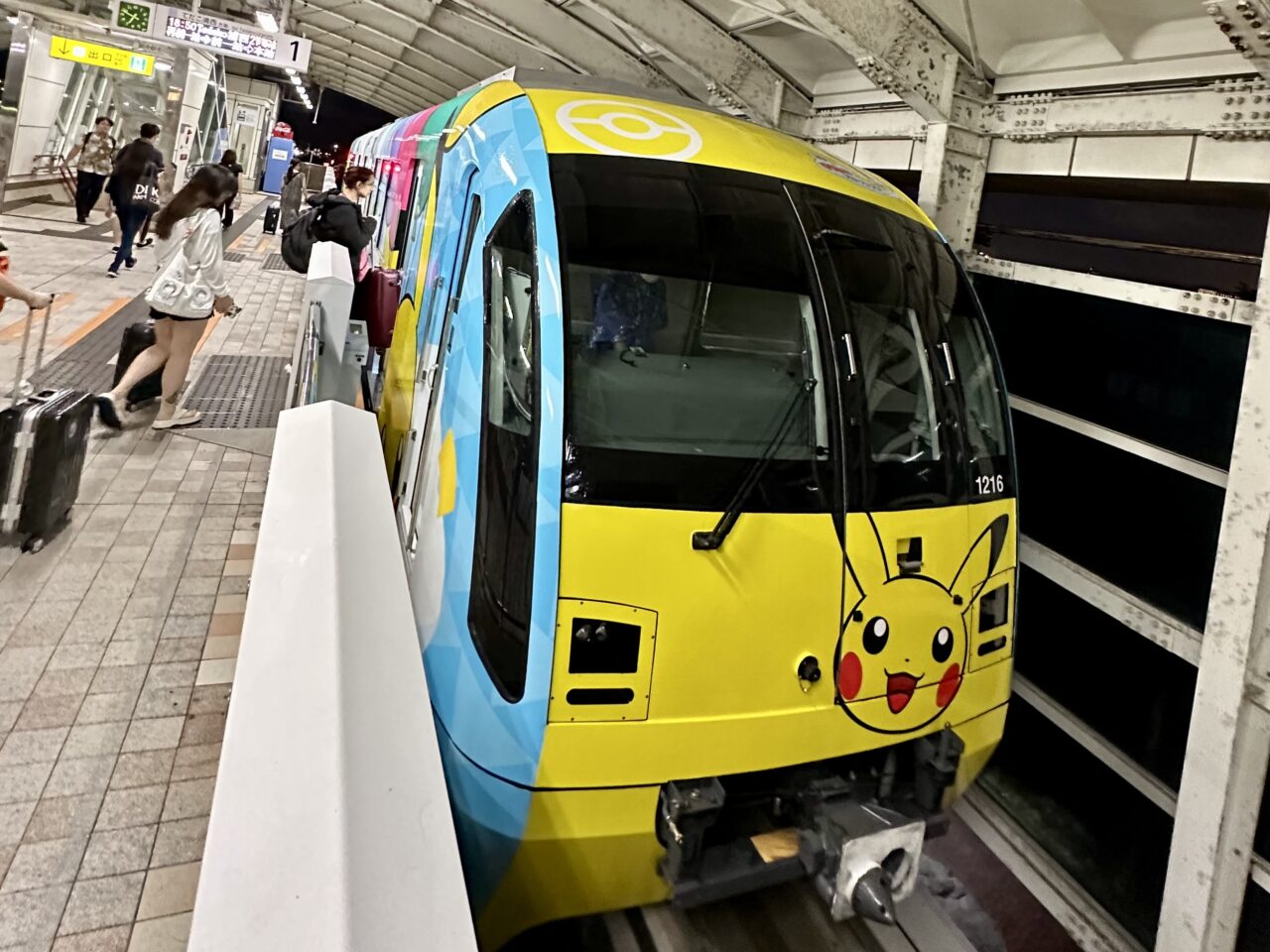
Downtown Naha
Kokusai Dori Shopping Street (国際通り商店街) would probably be considered Naha’s downtown. This long shopping street is full of wonderful eateries, snack and sweets stands, souvenir shops, restaurants and izakaya pubs, and much more. You can often see traditional Okinawan song and dance performances on the street, plazas, or restaurants around Kokusai Dori as well, which is always so exciting! You’ll see Pokémon everywhere too, as it seems that Okinawa and Pokémon have an official collaboration. I encourage you to explore side streets as well, and even walk down alleys! I loved finding really cool shops and izakaya around. Not too far from Kokusai Dori are Makishi Public Market (第一牧志公設市場) and Sakaemachi Arcade (栄町市場) shopping areas as well, if you want a bit more of a local feeling.
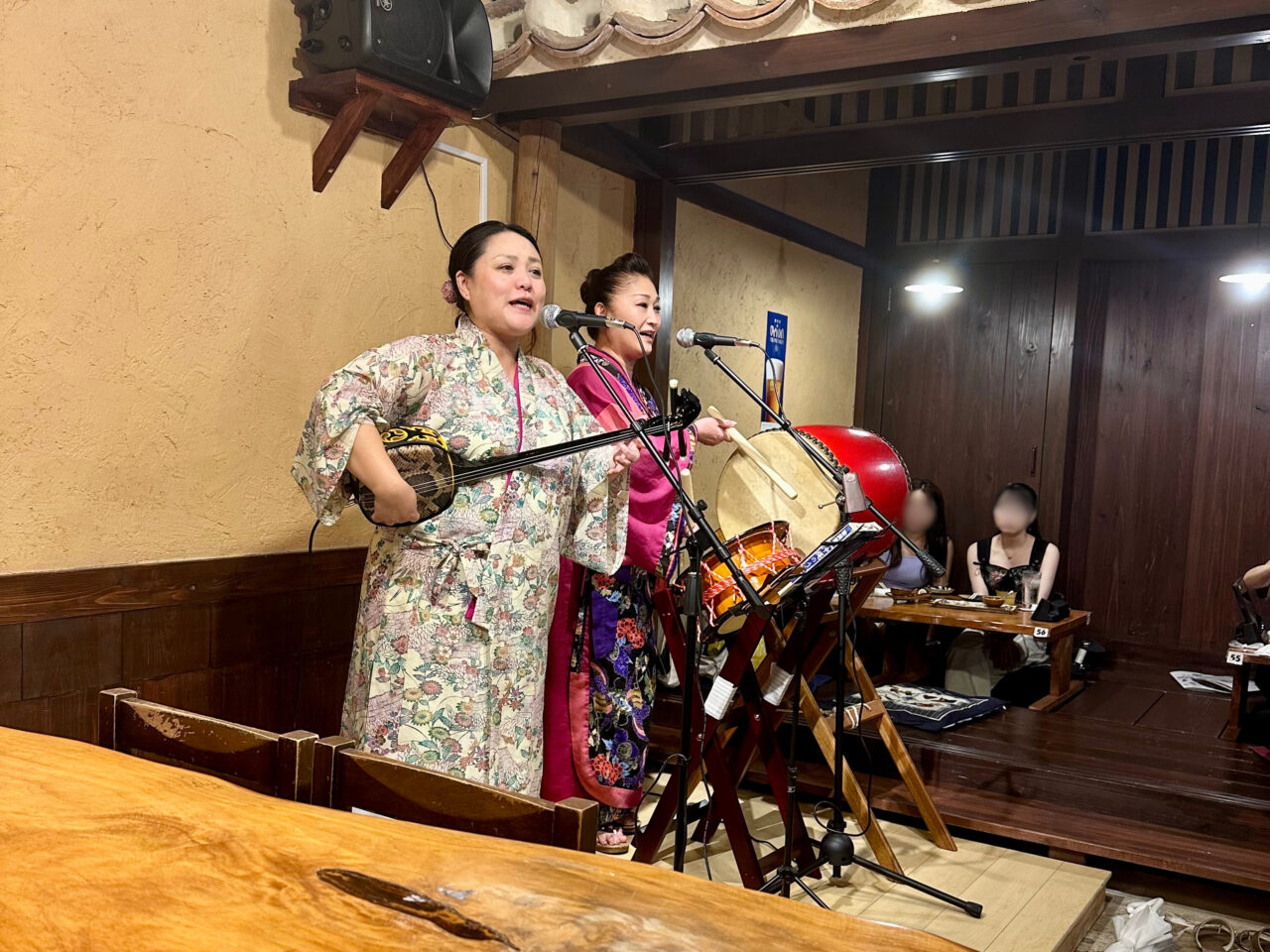
Culture in Naha
Shuri Castle (首里城) was the residence of the Ryūkyū royal family and also the head of the Ryūkyū government before Japan colonized Okinawa. It was basically destroyed in World War II’s Battle of Okinawa, but finally in the 1990’s it was rebuilt to its former glory. In 2019, a devastating fire destroyed the castle again, and it’s currently under reconstruction. You can still visit the castle grounds and see the reconstruction process. The walk there is uphill, so don’t go in stilettos, but it’s in a nice historic neighborhood.
Which brings us to our next destination not too far away, Shuri Kinjo Town Stone-paved Road (首里金城町石畳道), a historic street that’s great for photography!
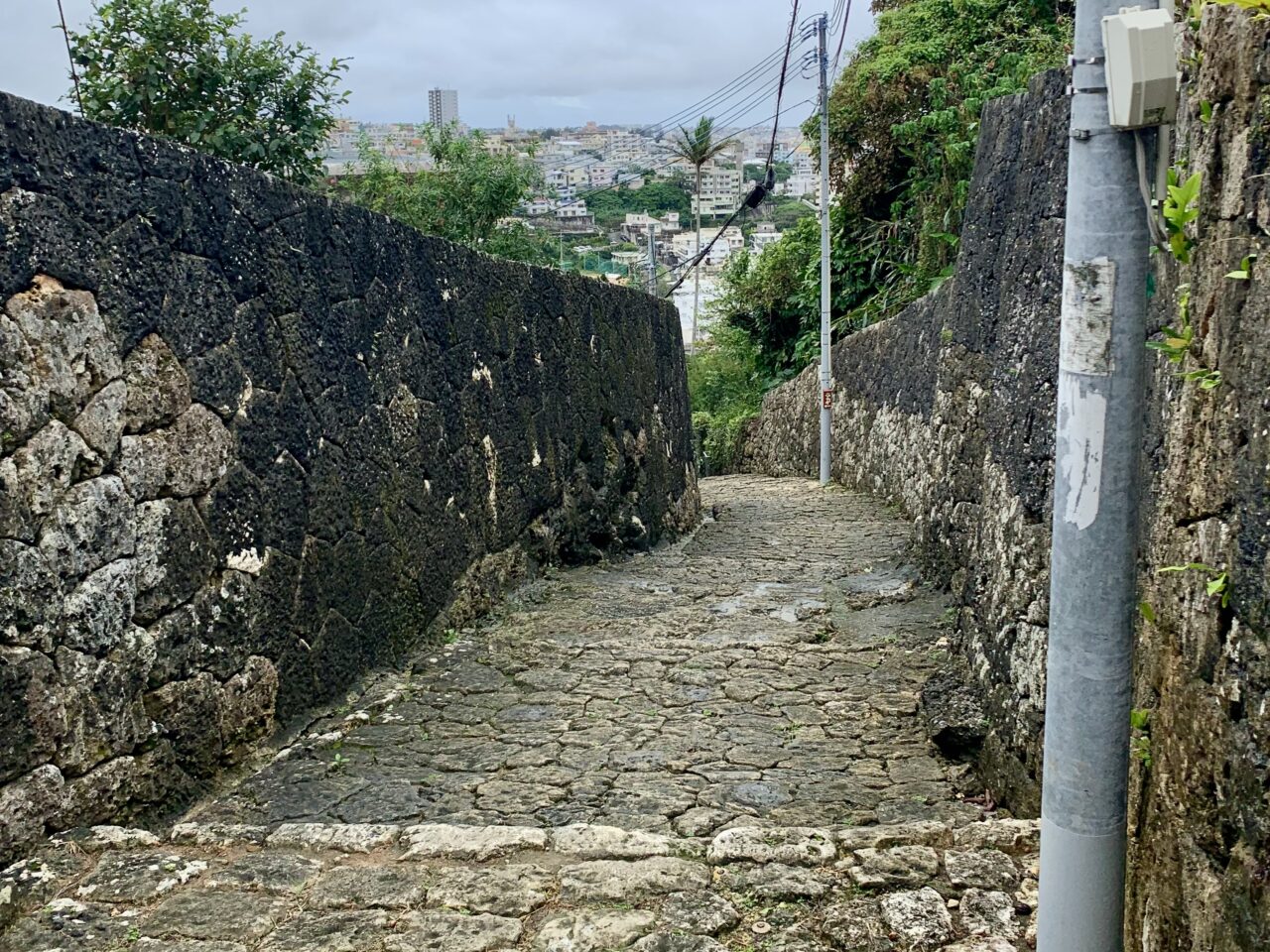
Both Shuri Castle and the stone-paved road would be wonderful destinations to wear a colorful ryūsō to! You probably know Japanese kimono, but while in Okinawa, you may notice that the traditional wear looks a bit similar yet also very different. Ryūsō (琉装) is the traditional Ryūkū clothing, and it’s stunning! Much like renting a kimono or yukata in mainland Japan, there are several rental services with options to take photos in the studio or around town in Okinawa. I wore one at a different location (I’ll post about it in Part 2), but there are many shops in Naha, too, with easy access to the castle, which seems like it would be great fun!
Next up, let’s talk about temples and shrines in Naha. The most famous is probably Naminoue Shrine (波上宮). “Nami” means “wave” and “no ue” means “above,” so it might not surprise you to hear that it’s located on a cliff above the beach. It’s nice!
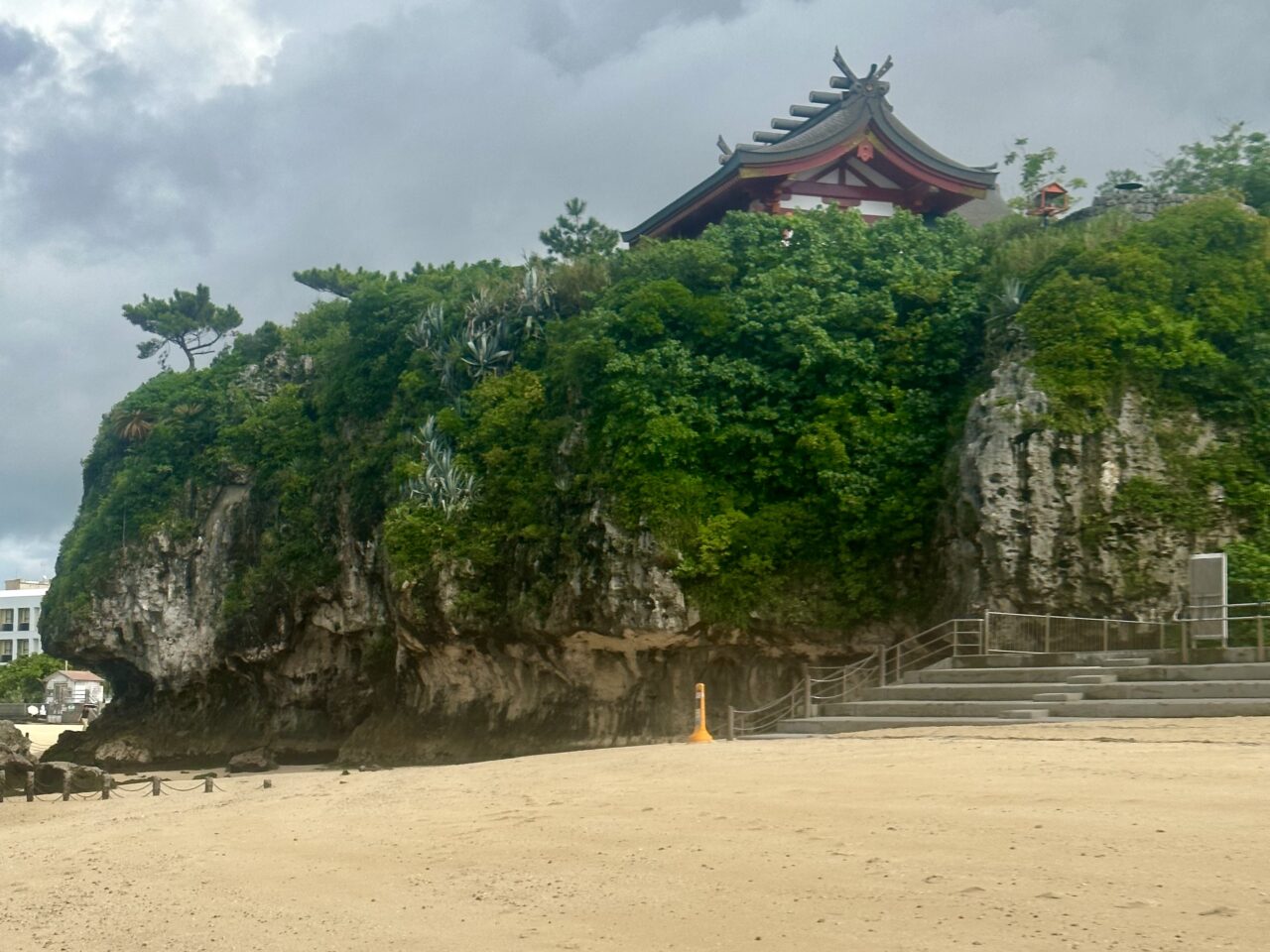
A temple that I really liked was Okinawa’s Daruma Temple Sairai-In (再来院). Not far from Shuri Castle, it’s a beautiful temple with friendly staff, tons of daruma dolls, and even a row of Fushimi Inari torii gates (which are usually at Shinto shrines). This is an interesting example of how Buddhism temples and Shinto shrines sort of blend in Japan sometimes; I’m not actually sure if there’s a Shinto shrine on the premises or if this temple has just adopted these Shinto Fushimi gates. When I go back someday I’ll ask the staff!
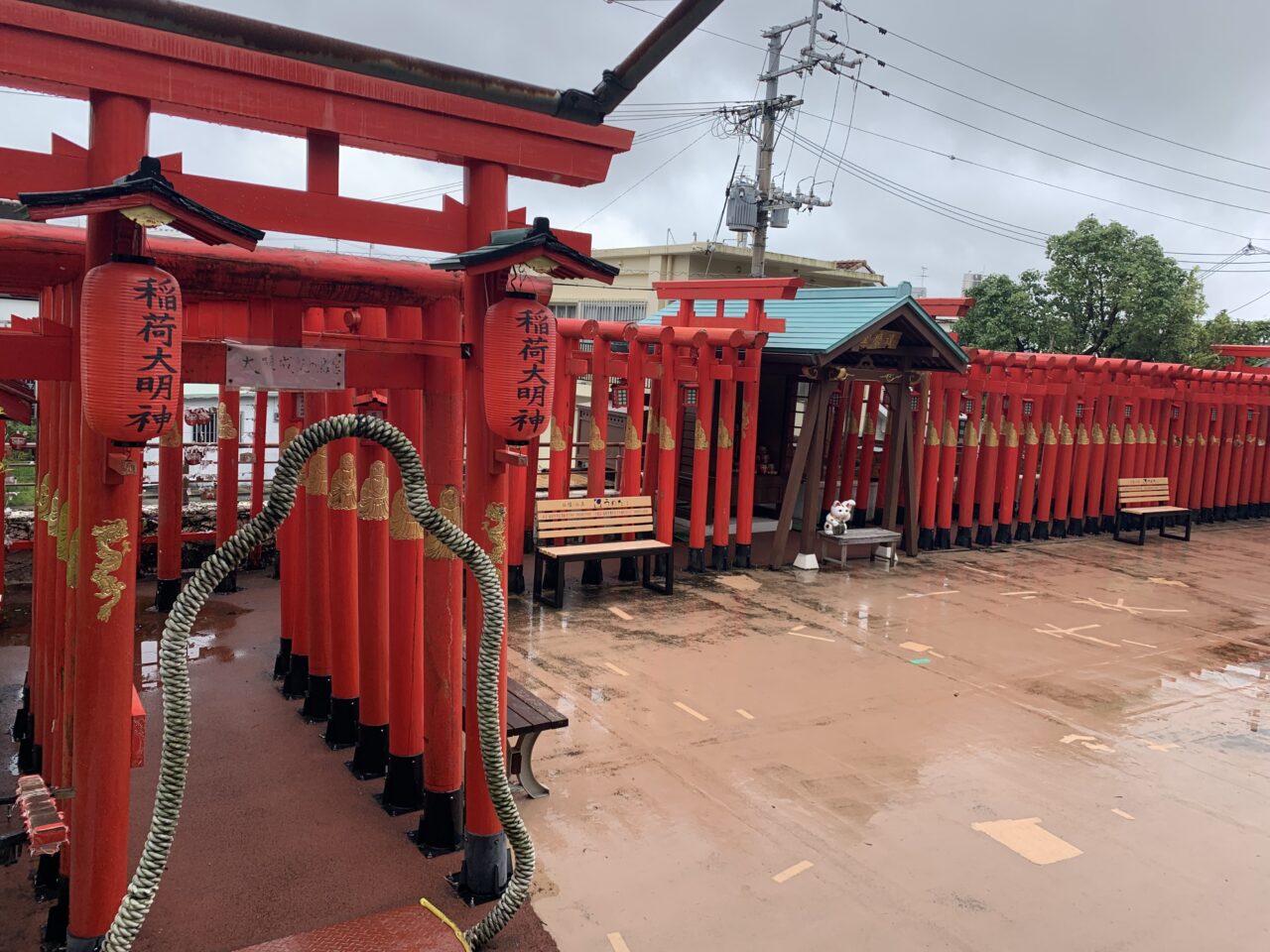
If you like gardens, I think you will enjoy Fukushuen Garden (福州園). Although I haven’t been, I have it pinned as somewhere I want to go. The grounds are nicely manicured and it seems that they might do some illuminations at night! It is kind of between downtown Naha and Naminoue, so it would be a great stop on the way to the shrine or beach.
Lastly, if museums are your thing, I’ve got a great one for you! The Okinawa Prefectural Museum and Art Museum (沖縄県立博物館・美術館) is a great way to learn about Okinawa’s history and culture! I don’t think I visited the art section, but the history and culture half of the museum was fascinating! I learned all about Ryūkyū culture, the kingdom before being colonized by Japan, Japan’s colonization period and World War II, and the post-war American occupation. Okinawa really has a complex, interesting history, and I’d recommend learning all you can about it!
Crafts in Naha
Bingata (紅型) is the traditional Okinawan method of intricately dying fabrics, which you may recognize from the colorful ryūsō clothing. Bingata was almost lost during World War II, but was saved through post-war efforts, and it’s now cherished throughout Okinawa and Japan! Of course you can buy many items with a bingata theme around town, but if you want to get crafty, you can try a sango (coral) dyeing workshop like I did! At studio Shuri Ryusen, you basically use coral or other stencils to rub dye into a fabric. It was fun painting the colors and shapes, and the actual motion of rubbing (much like gravestone rubbing) was kind of soothing! I made a tote bag which was a nice birthday gift for my aunt.
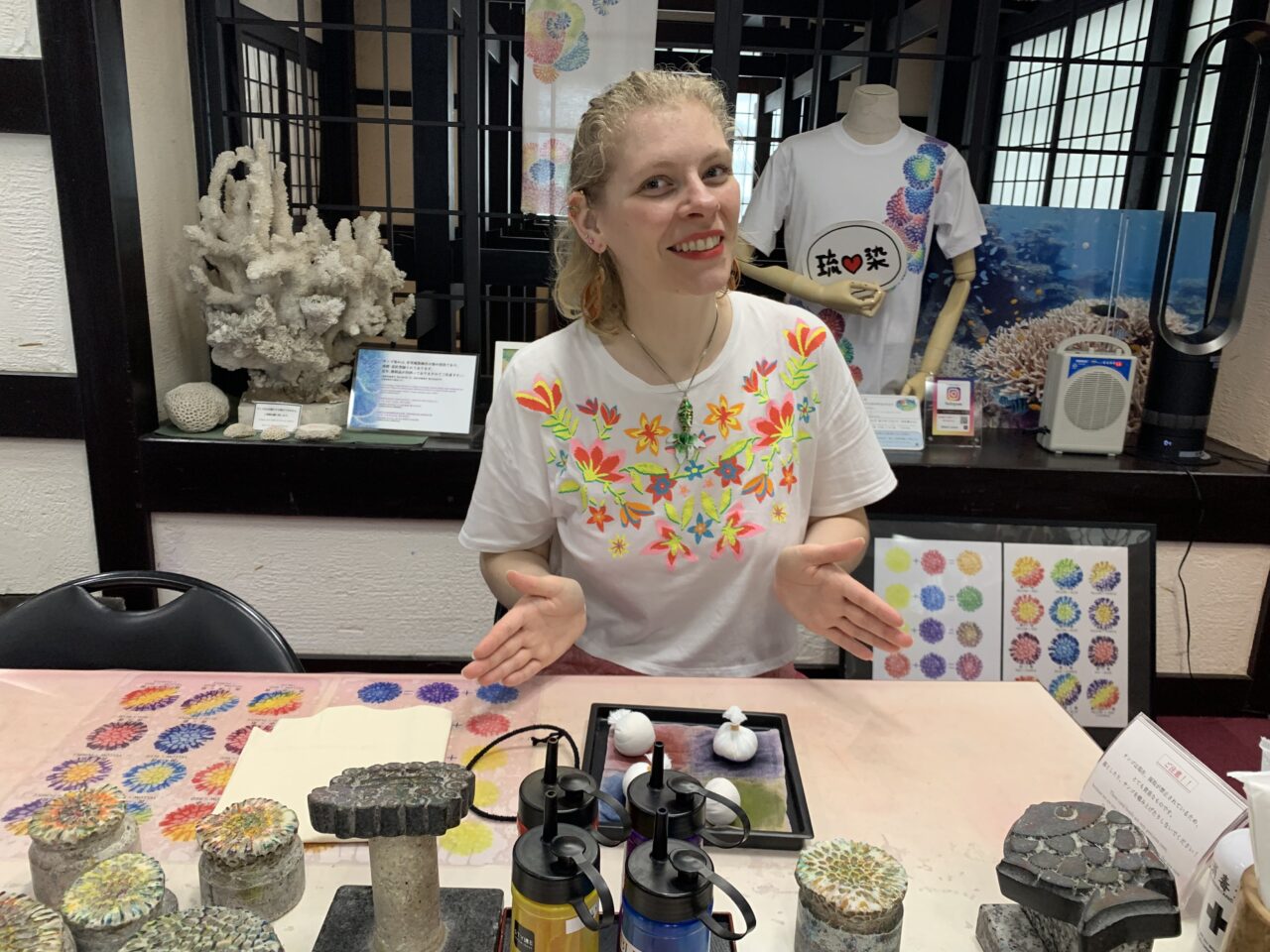
Walking around Okinawa, you may notice pairs of lions on or near buildings. These are called shisa (シーサー), a traditional Okinawan deity. You can buy small versions of these guys in souvenir stores as well as proper studios. Additionally, although I’ve never done it, you can take workshops to make your own shisa, which look fun.
Water Activities in Naha
Naha doesn’t have much beach access, but if you want to do some water sports or activities there are a few options. First, you can book a tour with some water activity company that includes transportation from Naha. There are activities throughout the island like jet skiing, glass bottom boats, glass kayaks, SUP, etc., which might include transportation. I haven’t done this so I can’t recommend any particular service, but there is a lot of information in English online, so if you Google “glass kayak tour Naha transportation” or the like, I’m sure you will find a result quickly.
My problem with doing water sports when I went to Okinawa was that I didn’t plan my trip very well, so I found myself trying to book a water activity for the next day. This might be possible in some parts of Okinawa, but there wasn’t much last-minute availability on a weekend in Naha. I did end up finding something, though! Naminoue Beach (Naha’s only public beach) has a SUP facility! If you’ve never been SUPing (stand up paddling), now’s your chance. It’s not as difficult as surfing, and you can sit down if you don’t like standing. The instructor at Naminoue Beach SUP was so friendly and helpful, and had the perfect balance of instructing, helping, and leading but not looming over my shoulder. The funny thing about Naminoue Beach is that there’s a giant highway overpass running through that section of the water, so while the view from the beach itself might look a bit lackluster, it was actually pretty cool to SUP under the overpass, both for observing some cool infrastructure but also having some shade.
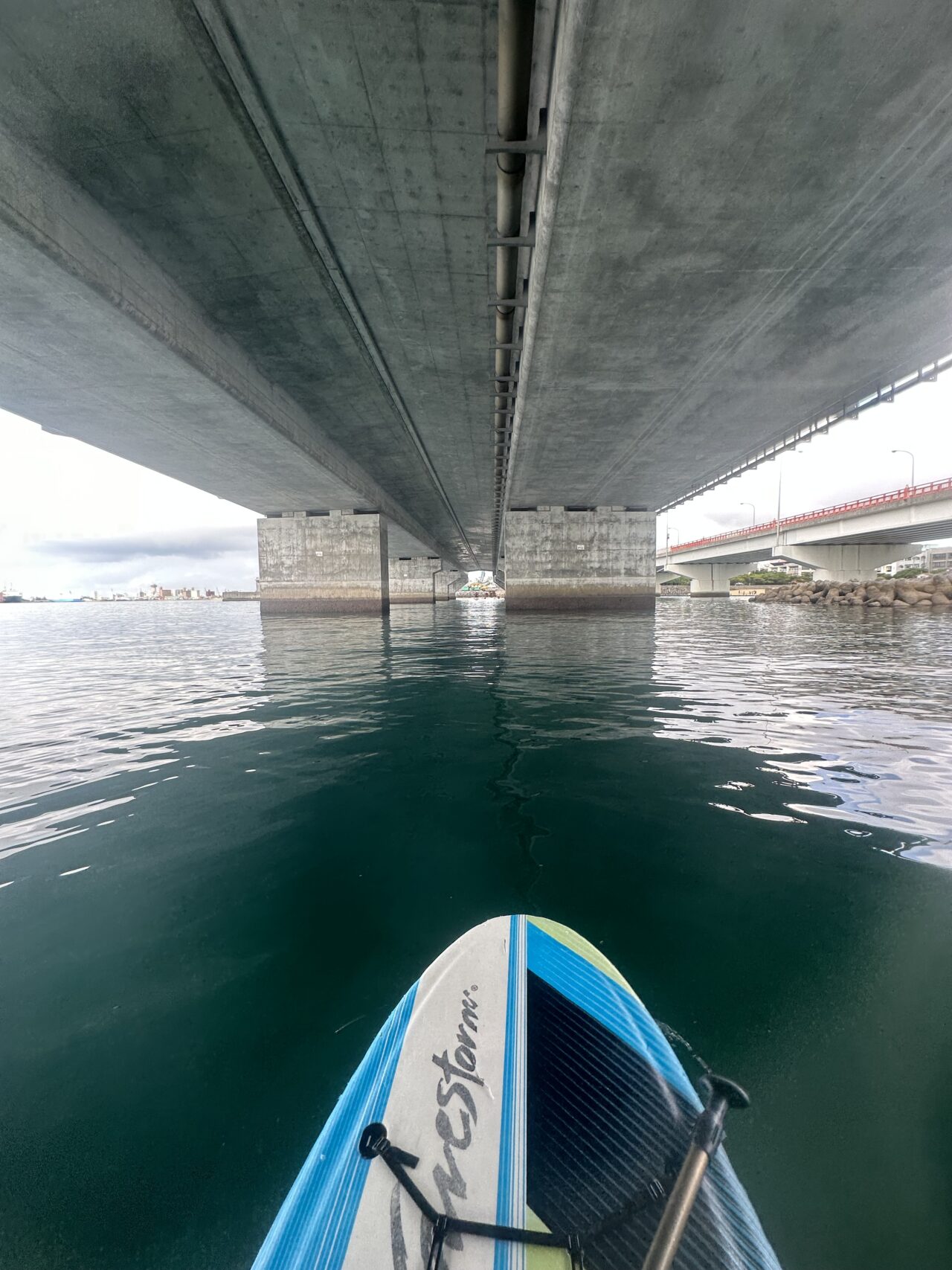
Ready to Go?
Have I convinced you to take a trip to Okinawa with or without a car yet? And this isn’t even everything! I’ll write about other sections of Okinawa Island in Part 2. But for now, get ready to wear your ryūsō and eat some good grub, and safe tropical travels!
